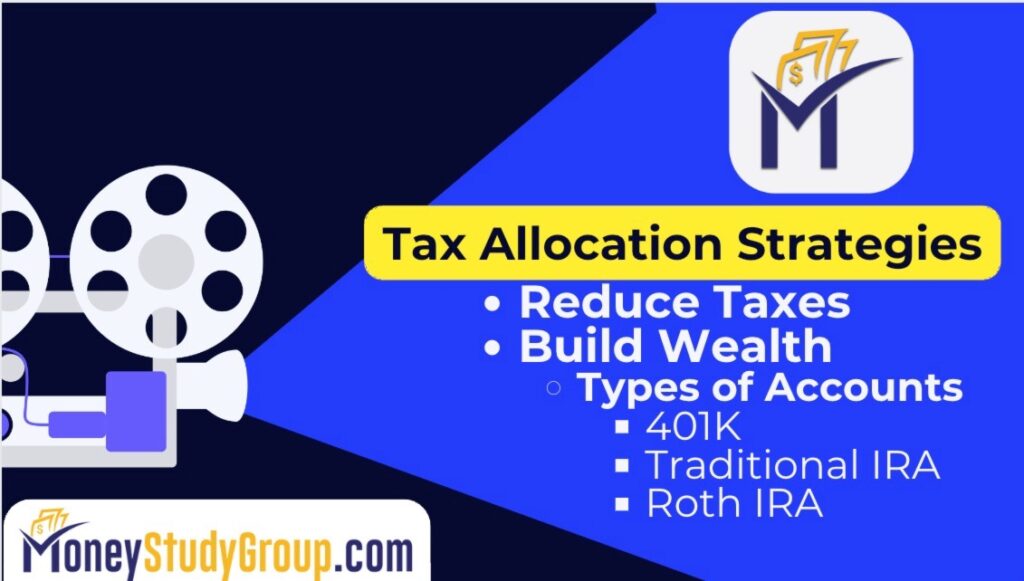Tax Allocation Strategies and Asset Allocation Review
Tax allocation, also known as asset location, is a strategy employed in investment management to optimize the tax efficiency of an investment portfolio. The goal is to allocate assets in a way that minimizes the tax burden while still achieving the desired risk and return objectives.
Tax allocation can be especially important for investors who have multiple types of accounts, such as taxable accounts, tax-deferred accounts (e.g., 401(k)s, IRAs), and tax-exempt accounts (e.g., Roth IRAs).
Key Principles:
-
Different Tax Treatments: Different types of assets are taxed differently. For example, interest from bonds is typically taxed as ordinary income, whereas long-term capital gains and qualified dividends have more favorable tax rates.
-
Time Horizon: Assets that you plan to hold long-term may be better suited for accounts where gains are tax-deferred, or even tax-exempt.
-
Investor’s Tax Bracket: High-income earners may be more concerned with minimizing ordinary income taxes and might allocate assets accordingly.
Common Strategies:
-
Tax-Efficient Funds in Taxable Accounts: Index funds and ETFs that are tax-efficient can be a good fit for taxable accounts as they generally have lower turnover and therefore fewer taxable events.
-
Income-Producing Assets in Tax-Deferred Accounts: Bonds, REITs, or other income-producing investments can go in tax-deferred accounts like a traditional IRA or 401(k) where the distributions won’t be taxed until withdrawal.
-
Growth Assets in Roth Accounts: Since Roth accounts are tax-exempt, placing assets that are expected to have high long-term growth can be beneficial. This allows the gains to be withdrawn tax-free in retirement.
-
Tax-Loss Harvesting: In taxable accounts, selling investments at a loss to offset gains can be an effective strategy to minimize current-year taxes.
-
RMD Considerations: If you’re older and subject to Required Minimum Distributions (RMDs) from tax-deferred accounts, keep in mind that these distributions are taxed as ordinary income. Therefore, it might make sense to keep assets with lower expected growth in these accounts.
Tax Allocation Benefits:
Here are my top three benefits of tax allocation in investment management:
1. Improved After-Tax Returns:
The primary benefit of tax allocation is to improve your after-tax returns. By strategically placing assets in the most tax-efficient accounts, you can significantly reduce the tax drag on your investment returns. For example, keeping high-dividend or interest-generating assets in tax-deferred or tax-exempt accounts can prevent those earnings from being taxed heavily, thus increasing the overall yield of your portfolio after taxes.
2. Long-Term Wealth Accumulation:
Over the long term, even small tax savings can accumulate into significant amounts due to the power of compounding. If you’re saving less in taxes each year, those savings can be reinvested to grow further, magnifying the benefit of the initial tax efficiency. Over several decades, this can result in a substantially larger portfolio compared to a less tax-efficient approach.
3. Financial Flexibility and Liquidity:
Effective tax allocation can also offer financial flexibility by allowing for a more efficient use of capital. For instance, you might keep assets with higher liquidity and lower tax implications in taxable accounts, ensuring you can access funds when needed without triggering a hefty tax bill. Additionally, by balancing your investments across various types of accounts, you can choose from which account to draw funds in a way that minimizes your current tax liability.
Optimizing tax allocation is a nuanced process and it often requires an understanding of tax rules, investment options, and individual financial situations. Nonetheless, the benefits make it an essential part of holistic investment management and financial planning.
Tax Allocation Challenges:
-
Complexity: The more accounts you have, the more complex the asset location strategy can become.
-
Liquidity: Certain tax-advantaged accounts have penalties for early withdrawal, so consider your liquidity needs.
-
Legal Changes: Tax laws can change, which may impact the efficiency of your tax allocation strategy.
-
Performance Trade-offs: Striving solely for tax efficiency should not overshadow the primary objective of meeting your investment goals.
Effective tax allocation requires a thorough understanding of your financial situation, tax status, and investment objectives.
Roth IRA vs 401k or Traditional (deductible) IRA
Watch the two videos listed below and do your own search to find additional resources to learn more about these types of accounts:
Roth IRA
Traditional (Tax Deductible) IRA
401K Retirement Account
For students at the Bauer College of Business at University of Houston:
Write an article 300 – 500 words,
Format the article as you would for other video summary assignments,
Include at least three source links in your article to receive full credit.
One of your links needs to be a YouTube.com link
Include Outline of Zoom Meeting (see below for more details)
Compare and contrast the Roth IRA vs the Traditional (Tax Deductible) IRA with respect to the following:
-
Who is eligible?
-
What are the Tax Advantages?
-
How much can a person contribute on an annual basis?
-
When can investors withdraw funds?
-
Tax Penalties
-
Distribution Requirements
-
Any Exceptions related to penalties and withdrawals
Becoming a Millionaire: Roth IRA vs 401K (What makes the MOST PROFIT)
Jim Cramer: Roth Or Traditional Account?
Part Two – BayRock Plan Updates
Tax Allocation
In part two of this Asset Allocation and Tax Allocation Review, you’re going apply what you learned about Tax Allocation. You will first need to update your planning portal with an extra $150,000 in 3 different investment accounts. You can delete these accounts after you complete your Capstone Assignment. Use your own Asset Allocation as you create your investment accounts. And tell me what you learned as you pay close attention to how your choices impact your financial plan.
Asset Allocation and Tax Allocation Review Screenshots”
-
Before Probability
-
Before Asset Allocation
-
Before Tax Allocation
-
Investment: Big Blue Bucket — $50k
-
Investment: Tax Deductible IRA — $50k
-
Investment: Tax Free Roth IRA — $50k
-
Investment Account Summary
-
After — Asset Allocation
-
After — Probability
-
After — Tax Allocation
Asset Allocation and Tax Allocation Review Before Screenshots
Asset Allocation and Tax Allocation Review Probablity

Asset Allocation

Tax Allocation

Asset Allocation and Tax Allocation Review
Add 3 Investment Accounts
Taxable Account — $50,000
Big Blue Plastic Bucket

Tax Deferred
Tax Deductible IRA — $50,000

Big Brown Bucket (401K)

Asset Allocation and Tax Allocation Review Tax Free Accounts
Roth IRA — $50,000
Small Gold Bucket

Asset Allocation and Tax Allocation Review Investments
Investment Account Summary

Asset Allocation and Tax Allocation Review After Screenshots
Asset Allocation

Asset Allocation and Tax Allocation Review Probability

Tax Allocation

Asset Allocation and Tax Allocation Review Homework
For students at the Bauer College of Business at University of Houston who are enrolled in Money Study Group:
-
Include Session 11 Quiz (Screenshot)
-
Include Session 11 Class Collaboration Screenshot for the upcoming Capstone Workshop:
Post a brief comment with any specific question or issue related to your financial plan. If you have a specific question that you want me to address in the upcoming Capstone Workshop, please post your specific question(s) in the comments.
If you’re having no issues and if you don’t really have any questions, please post a comment describing your overall experience this semester in Personal Finance.
Post in Money Study Group, Facebook, or YouTube and grab a screenshot.










